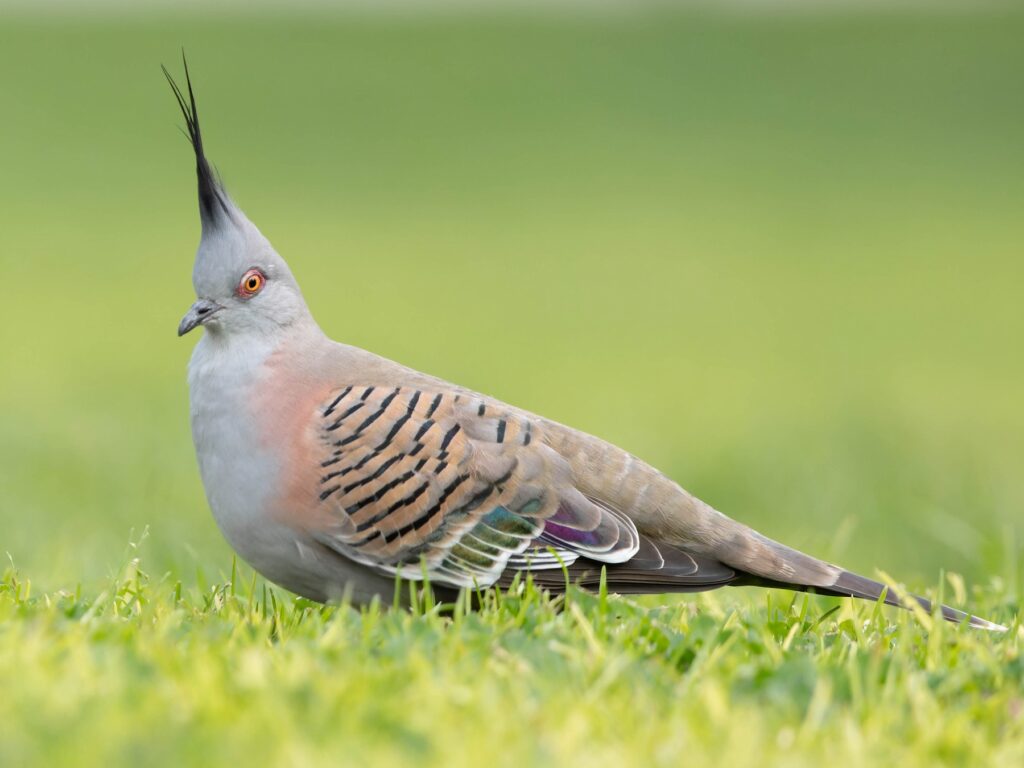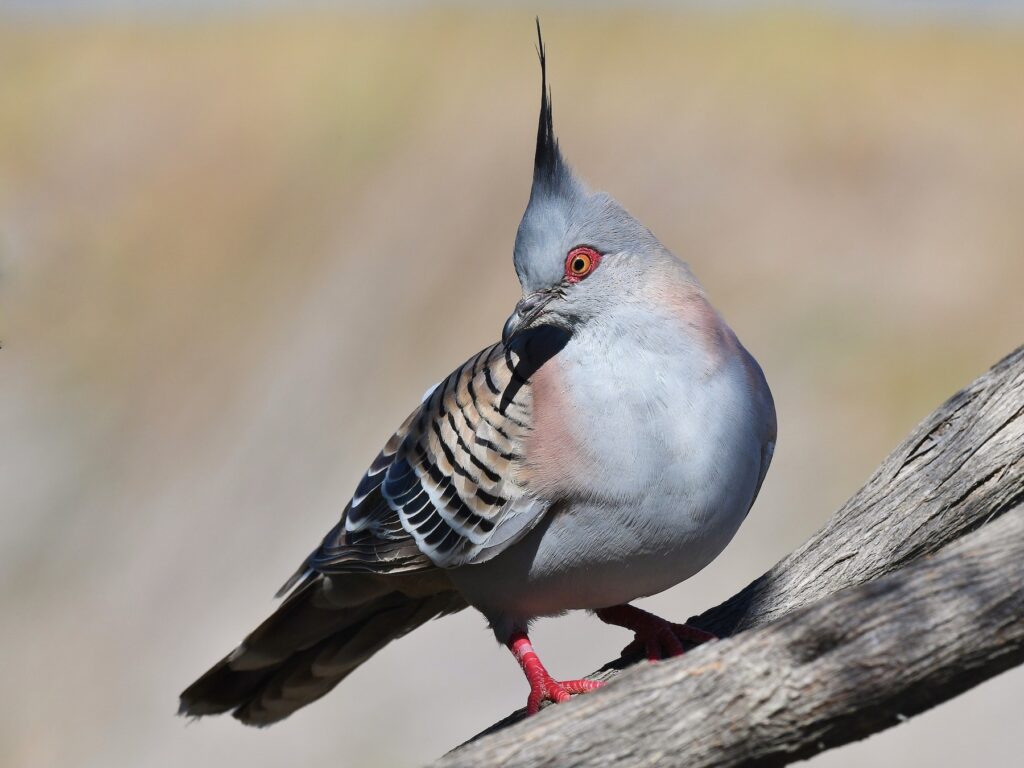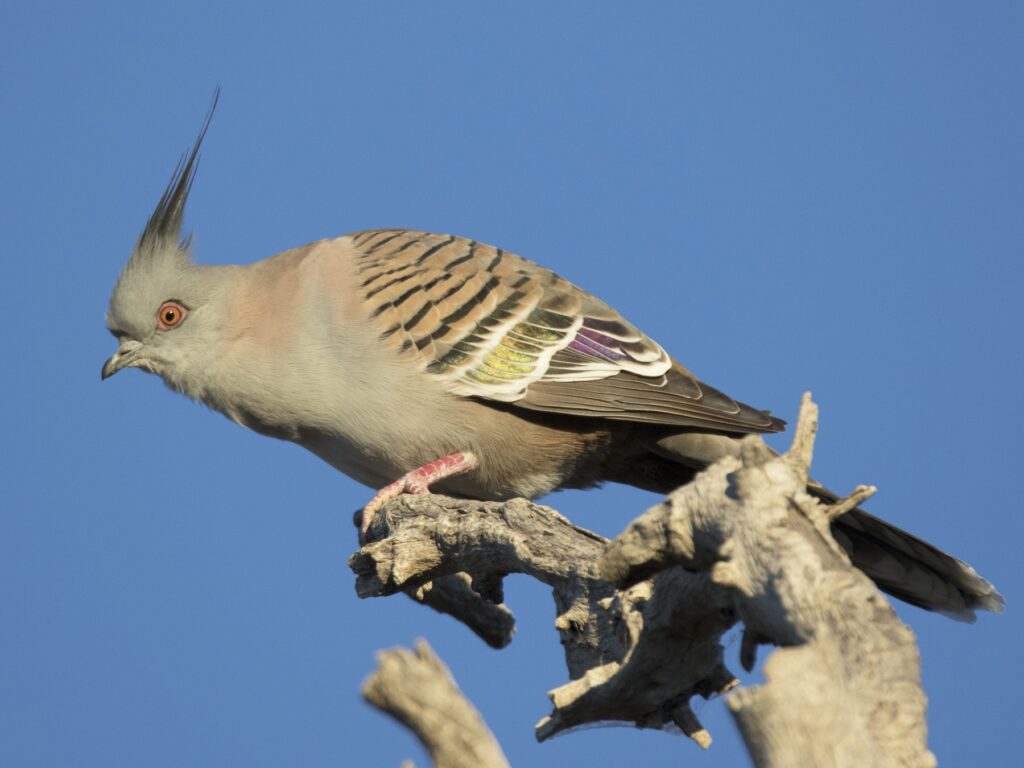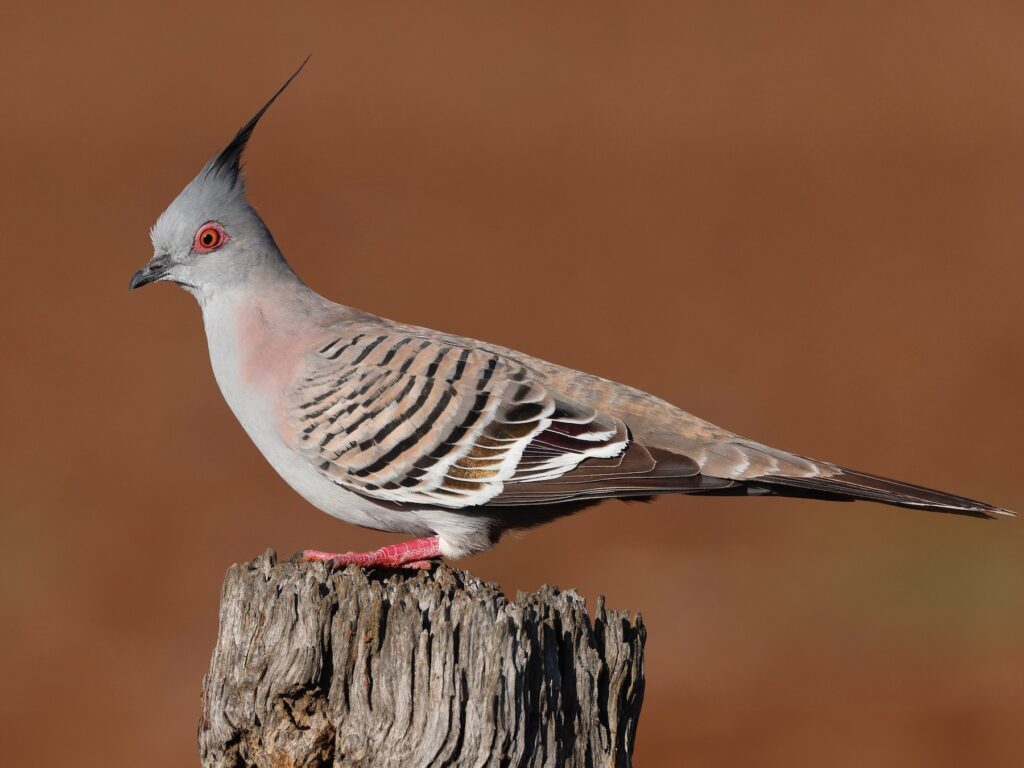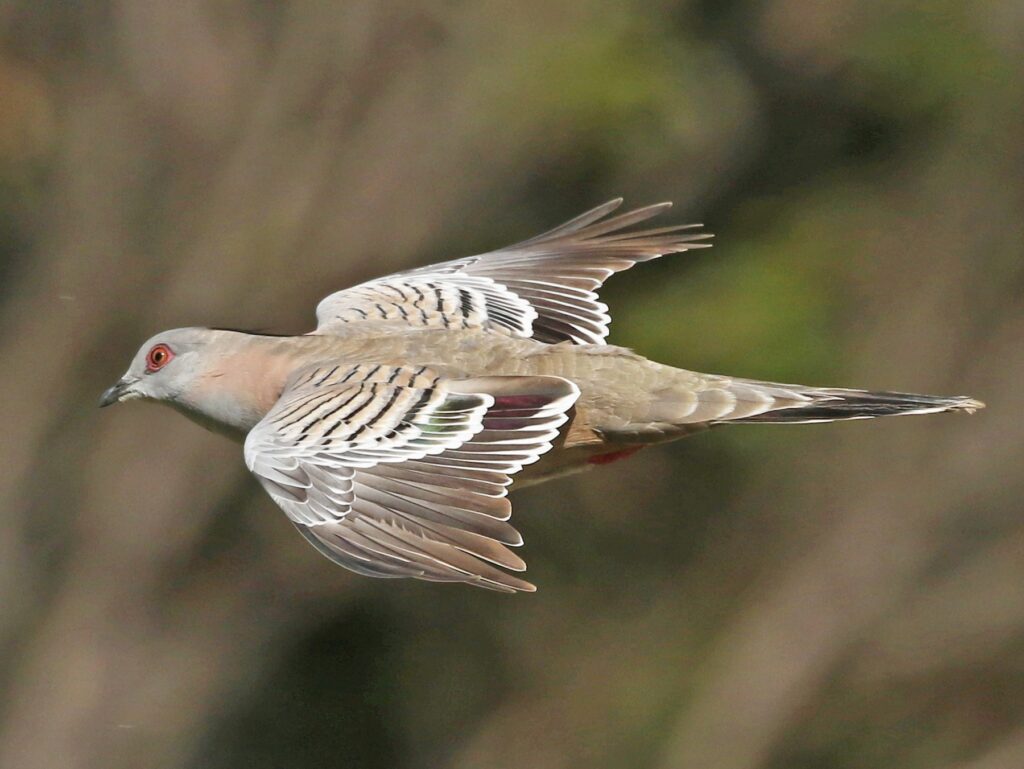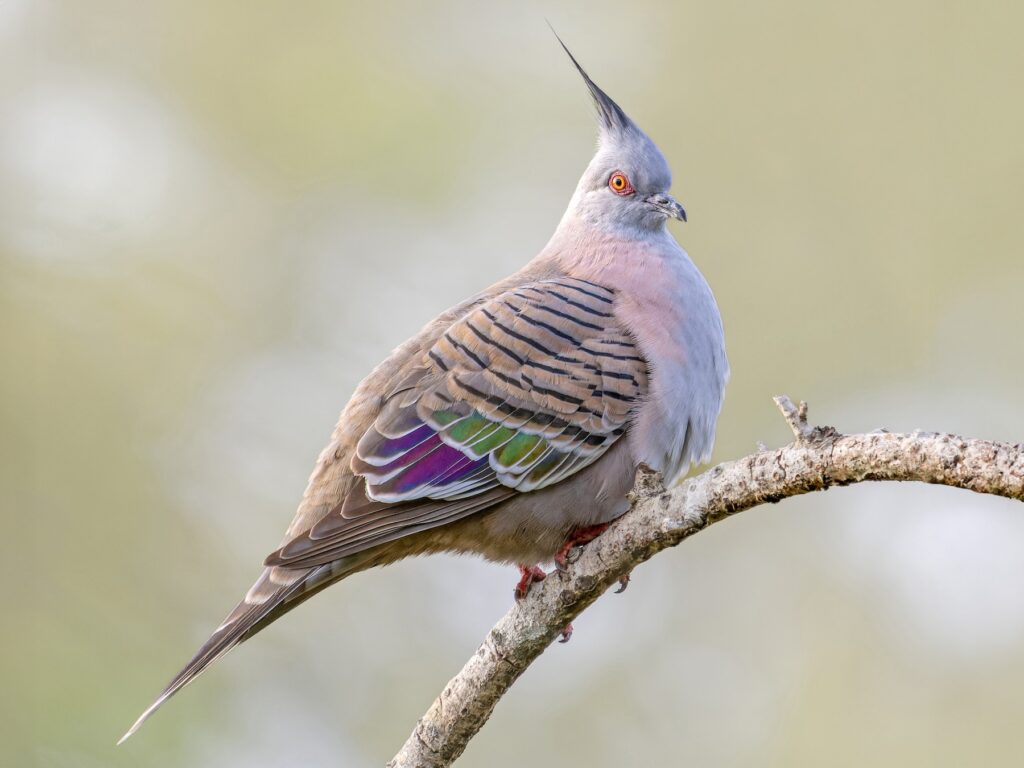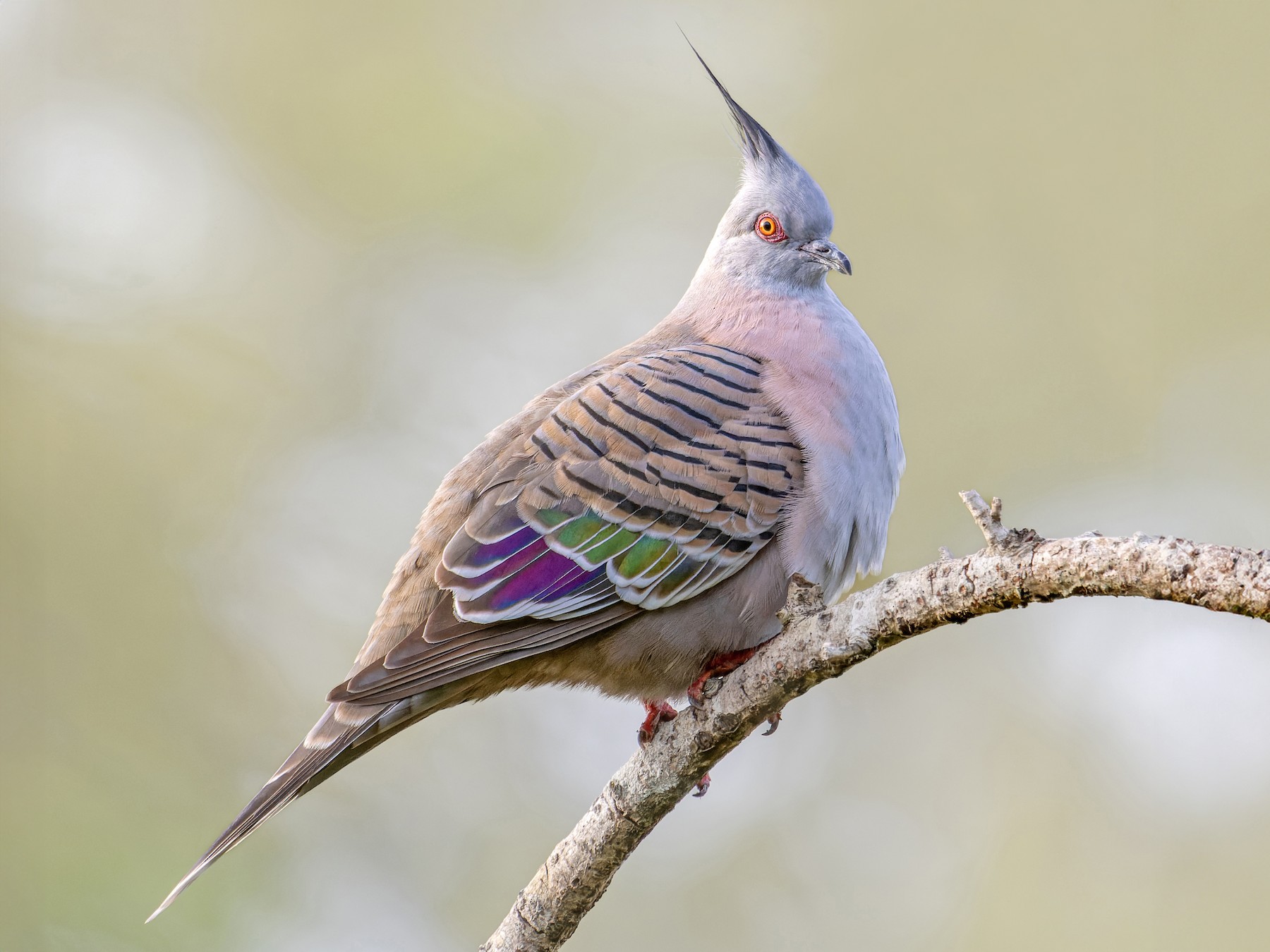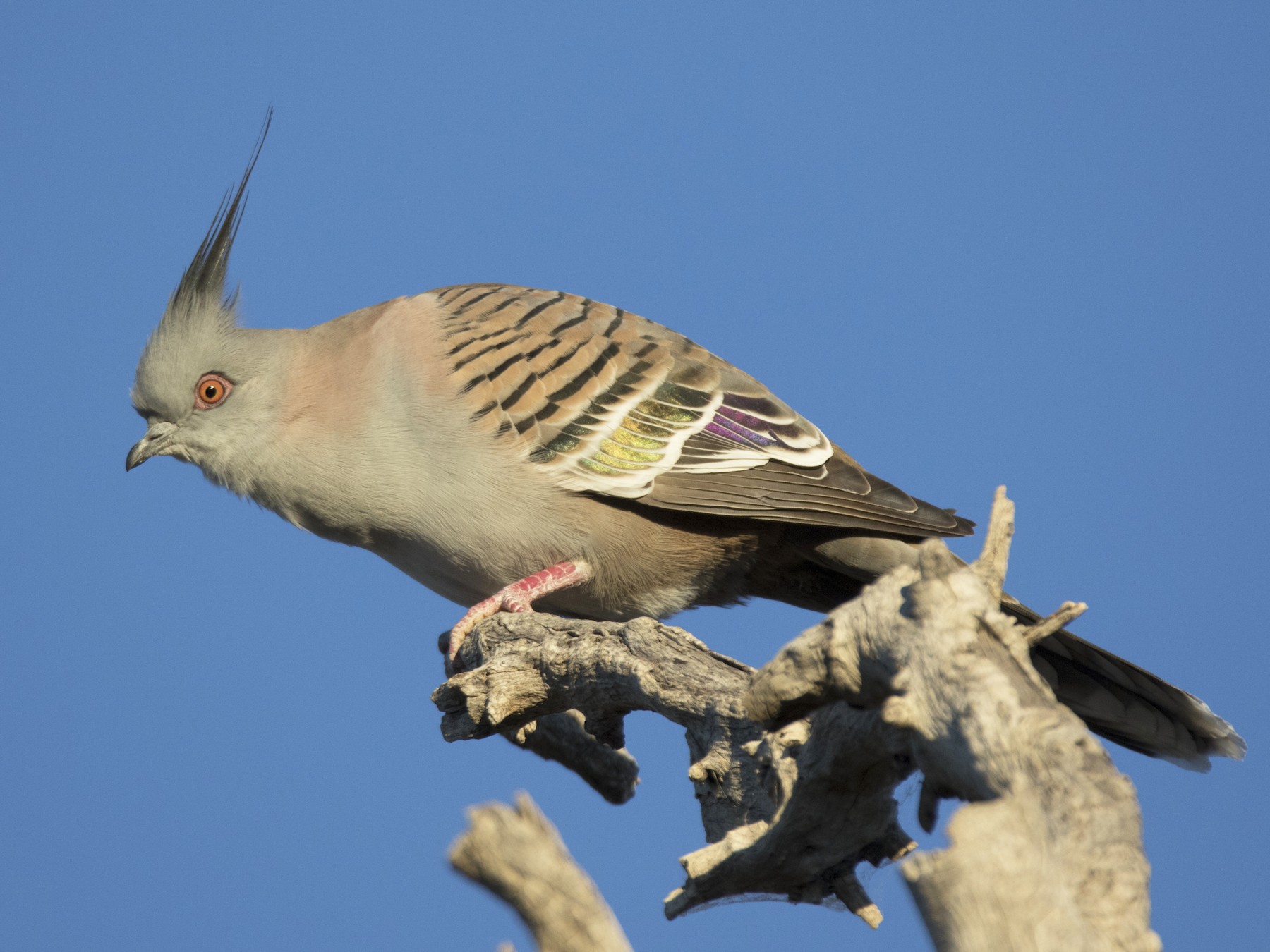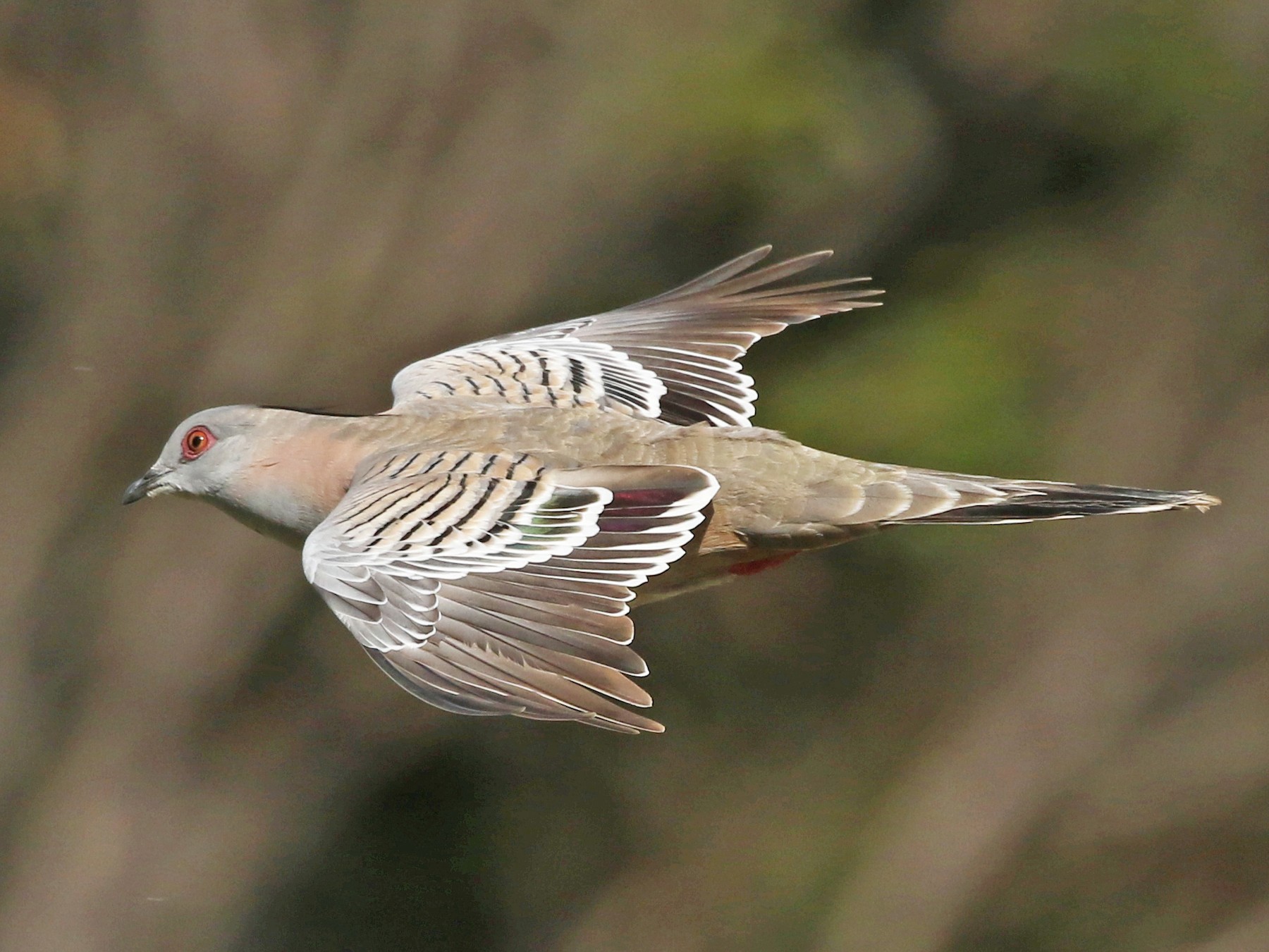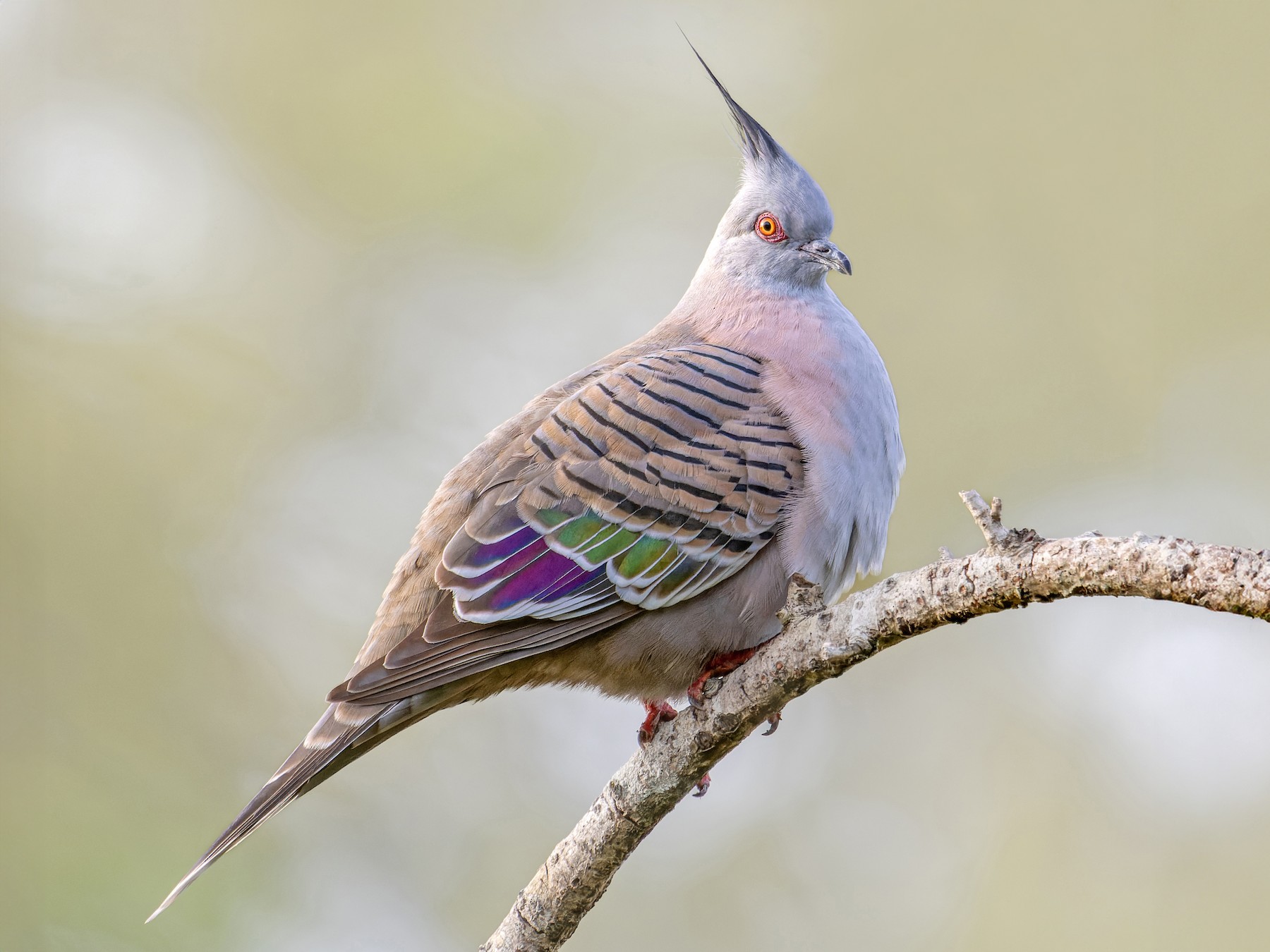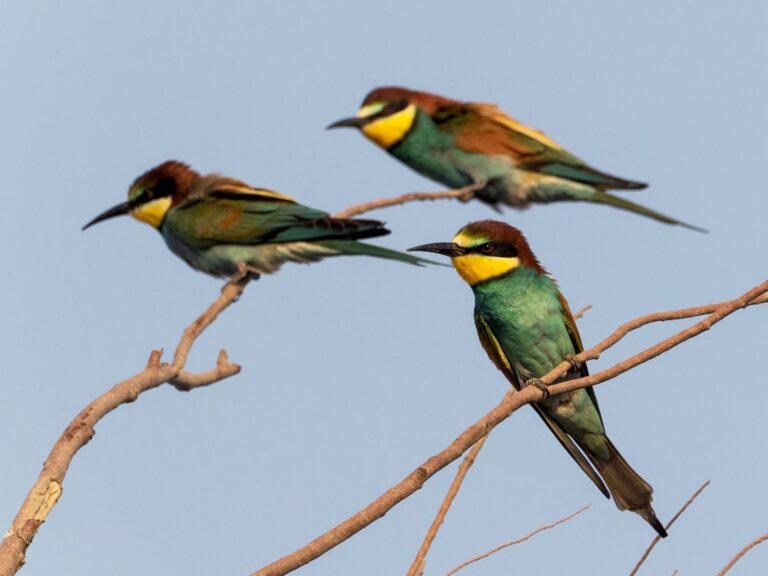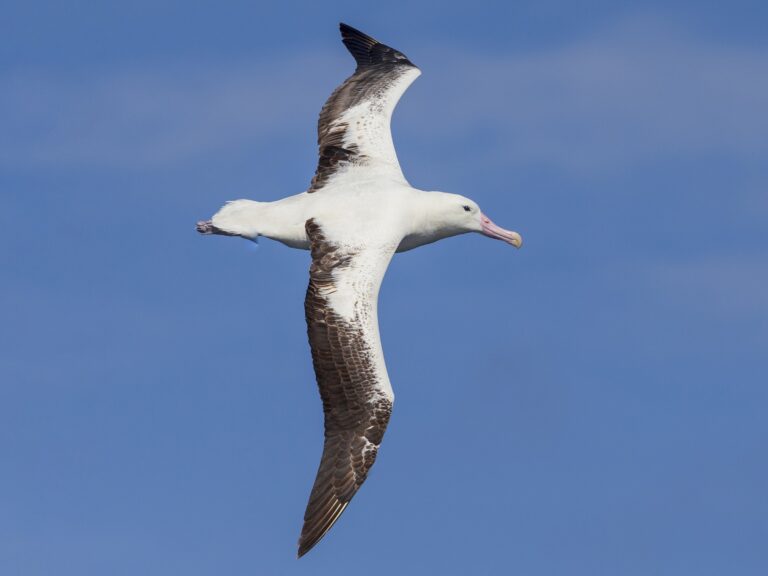Crested Pigeon: A Fascinating Look at Australia’s Unique Avian Beauty
The Crested Pigeon is a unique bird known for its striking appearance and interesting behaviors. This species stands out due to its distinctive crest and adaptability to urban environments, making it a common sight in Australia.
Observers often find them engaging, as they exhibit a variety of social behaviors and interactions. These pigeons thrive in a range of habitats, from suburban gardens to open grasslands. Their diet mainly consists of seeds and grains, which they often forage for on the ground.
The Crested Pigeon also breeds in the warmer months, showcasing a remarkable ability to adjust to changing conditions. Fascination with the Crested Pigeon goes beyond its looks.
Understanding their role in the ecosystem and their adaptive behaviors offers valuable insights into urban wildlife. Observers of nature will find that learning about this bird enriches their outdoor experiences.
Key Takeaways
- The Crested Pigeon has a unique appearance and thrives in various habitats.
- Its diet primarily includes seeds and grains from the ground.
- Understanding these birds enhances appreciation for urban wildlife.
Taxonomy and Classification
The taxonomy and classification of the Crested Pigeon help to understand its biological relationships and evolutionary history within the bird family.
This section will explore its scientific name, connections to other pigeon species, and its position within the broader taxonomic hierarchy.
Sign Up for Our Monthly Newsletter
Every month we send out our newsletter about interesting (and sometimes quirky) things happening in the world of birding. Give it a try!
Scientific Name and Authority
The scientific name of the Crested Pigeon is Ocyphaps lophotes. This name was first described by the ornithologist John Gould in 1842.
The term Ocyphaps comes from Greek, where “ocy” means swift and “haps” means to seize, typically referring to the bird’s quick movements. The species name lophotes indicates its distinctive crest, which is a prominent feature of this pigeon.
Relation to Other Pigeons
The Crested Pigeon belongs to the family Columbidae, which includes all pigeons and doves.
Within this family, it shares connections with other species like the Topknot Pigeon (Lopholaimus antarcticus) and the Crested Bronzewing (Phaps pectoralis). These species are all part of the subfamily Columbinae.
The Crested Pigeon is often found in similar habitats, such as woodlands and urban areas, where it can coexist with its relatives.
Taxonomic Hierarchy
The taxonomic hierarchy of the Crested Pigeon is as follows:
- Kingdom: Animalia
- Phylum: Chordata
- Class: Aves
- Order: Columbiformes
- Family: Columbidae
- Genus: Ocyphaps
- Species: Ocyphaps lophotes
Physical Characteristics
The Crested Pigeon is notable for its unique physical traits that make it easily recognizable. From its distinctive crest to its vibrant plumage, each aspect contributes to its charm. This classification places the Crested Pigeon within a specific lineage of birds that includes other well-known pigeons.
Distinguishing Features
The Crested Pigeon has several distinguishing features that set it apart from other pigeons. Its most prominent characteristic is the long, slender crest on its head, which can be raised or lowered depending on its mood.
The bird also has red eyes that stand out against its soft-colored feathers. Additionally, the pigeon has a long tail with distinctive white tips.
Its body structure is streamlined, allowing for agile flight. These features are crucial for its survival, helping it evade predators and navigate urban environments.
Plumage Colors and Markings
The plumage of the Crested Pigeon is both striking and subtle. The main body color ranges from grey to light brown, providing excellent camouflage among rocks and vegetation.
Interesting patterns adorn its wings and back, including iridescent green and purple patches that shimmer when exposed to sunlight. These color variations help the bird blend with its surroundings.
The markings not only serve a practical purpose but also play a role in attracting mates during the breeding season. The combination of these colors creates a beautiful appearance that is both functional and appealing.
Crest and Whistling Sound
The most distinctive feature of the Crested Pigeon is its unique crest, which is made up of elongated feathers. This crest can be seen erect during displays of courtship or when the bird feels threatened.
In addition to its visual appeal, the Crested Pigeon is known for its distinctive whistling sound. This sound is produced when the pigeon takes off in flight, creating a melodic tune that resonates in its natural habitat.
This whistling adds to the beauty of its presence, making it a favorite among birdwatchers and nature enthusiasts alike. For more in-depth information, consider exploring studies on its morphological traits.
Habitat and Geographic Distribution
Crested pigeons are primarily found in Australia and demonstrate notable adaptability to various environments. Their distribution highlights how they thrive in both natural and urban habitats.
Native Range in Australia
Crested pigeons are endemic to Australia.They are commonly found in eastern and central regions, extending from southern Queensland to New South Wales, Victoria, and parts of South Australia.
This bird prefers areas where the vegetation is varied but not overly dense, allowing for easy foraging and nesting. They inhabit open forests, woodlands, and grasslands.
Their population density can vary significantly depending on resource availability, such as food and water sources.
Preferred Habitats
The preferred habitats for crested pigeons include open woodlands and grassy lands. They are often seen in agricultural fields where they feed on seeds and grains. These birds require access to water, so they are usually found near streams, ponds, or other water sources.
Crested pigeons tend to roost in trees or shrubs during the night, providing cover from potential predators. Their adaptability allows them to thrive in disturbed landscapes, making them a common sight in rural and suburban areas.
Adaptation to Urban Areas
Crested pigeons have shown remarkable ability to adapt to urban environments. Cities provide abundant food resources, including seeds and scraps from parks and gardens. They are often seen in urban parks, cemeteries, and other green spaces.
The birds have learned to navigate among human activities, which has contributed to their rising population in metropolitan regions. This adaptation helps them avoid natural predators while taking advantage of new feeding opportunities.
The successful integration into urban life demonstrates their resilience as a species. For more information about their habitat and distribution, readers can refer to studies on their habitat occupancy.
Diet and Feeding Behavior
The diet of the Crested Pigeon is varied, consisting mainly of seeds and other small food sources. Their feeding behavior is often social, taking place in flocks, which helps them find food sources more efficiently. Additionally, water consumption plays a key role in their daily routines.
Primary Food Sources
Crested Pigeons primarily eat seeds from a variety of plants. They prefer small seeds, such as those from grasses and legumes. Additionally, they consume grains, which are abundant in agricultural areas.
Insects can also be part of their diet, especially during the breeding season when protein is essential for chick development. Notably, these pigeons are skilled at foraging, using their strong beaks to pick up food from the ground.
For more detailed information on their dietary habits, the food choices of Crested Pigeons are explored in various studies.
Feeding in Flocks
Crested Pigeons often feed in flocks. This social behavior offers advantages, such as increased safety from predators. When feeding together, they can be more vigilant and quickly alert one another to threats.
Their flocking behavior also enhances foraging efficiency. While one pigeon uncovers seeds, others can focus on different areas. This teamwork allows them to gather food more effectively.
In addition to safety, feeding in flocks can lead to sharing information about rich food sources. Group dynamics play a vital role in their success as foragers and in maintaining healthy populations.
Water Consumption
Water is essential to the Crested Pigeon’s survival. They usually drink from shallow sources like puddles or birdbaths. They need to maintain hydration, especially in warmer weather.
In addition to drinking, they may also find moisture in their food. Eating fresh seeds and grains can provide some necessary hydration. Regular access to water sources is crucial. During dry seasons, their survival can depend on locating reliable water supplies. For insights into their water habits, check out the details on their drinking behaviors.
Breeding and Reproduction
Crested pigeons have specific rituals and practices when it comes to breeding and raising their young. Several stages are critical, including courtship, the breeding season, and the nurturing of their eggs.
Courtship and Nest Building
During courtship, male crested pigeons perform elaborate displays to attract females. These behaviors include puffing up their bodies and cooing softly. Males also exhibit distinctive wing-flapping and tail-fanning during their display to showcase their attractiveness.
After courtship, they begin nest building. Crested pigeons typically choose low shrubs or trees for nesting. The nests are often made of twigs and grass. A well-constructed nest is crucial as it provides protection for their eggs.
Breeding Season
The breeding season for crested pigeons can vary but generally occurs throughout the warmer months. This often means late spring through early fall. During this time, pairs form strong bonds and may raise multiple broods in a single season.
Conditions must be favorable, as this impacts the success of egg viability. Males are particularly active in defending their territory, ensuring a safe environment for successful breeding.
Eggs and Raising Young
Crested pigeons usually lay two white eggs per clutch. The incubation period lasts about 14 days, with both parents taking turns keeping the eggs warm.
After hatching, the chicks are fed by both parents, who provide a nutrient-rich substance known as “pigeon milk.”
As the chicks grow, they develop feathers and become more mobile. The parents continue to protect and feed them until they are ready to leave the nest, usually around 3 weeks after hatching.
Behavior and Conservation
Social Structure and Gregarious Nature
Crested pigeons are known for their gregarious behavior. They often form flocks, which can number in the hundreds. This social structure helps them foraging for food and avoiding predators. Flocking allows for safer feeding as individuals can keep a lookout for threats.
In these groups, they demonstrate behaviors such as mutual preening and close physical proximity. These interactions strengthen social bonds among members of the flock. They can often be spotted in urban areas, showcasing their adaptability.
Vocalizations and Communication
Crested pigeons use a variety of vocalizations to communicate. One of their most distinctive calls is a soft, cooing sound.
This sound serves multiple purposes, including attracting mates, signaling alarm, and maintaining contact within flocks. Males typically initiate calls to demonstrate territory and attract females.
Different vocalizations can indicate various emotional states or environmental conditions. Visual signals, such as head bobbing or crest displays, also play an essential role in communication. This combination of vocal and physical communication helps maintain social cohesion among flocks.
Threats and Conservation Status
Currently, crested pigeons are listed as being of least concern in terms of conservation status. Their adaptable nature allows them to thrive in various environments, including urban settings.
However, they still face threats such as habitat loss due to urban development. Other dangers include predation from domestic cats and competition for resources with other bird species.
Conservation efforts focus on preserving natural habitats and encouraging urban planning that supports wildlife. Public awareness and education about the importance of these birds help ensure their survival. Initiatives that promote safe environments can contribute to maintaining stable populations of crested pigeons.
Frequently Asked Questions
Crested Pigeons are intriguing birds that often spark curiosity due to their unique features and behavior. This section addresses some common questions about their lifespan, characteristics, and legal status as pets.
How long do Crested Pigeons typically live?
Crested Pigeons can live up to 5 to 10 years in the wild. Factors like habitat, food availability, and predation can affect their lifespan.
What are the physical characteristics of a Crested Pigeon?
Crested Pigeons have a distinctive crest on their heads, grayish-brown feathers, and a black line running from the eyes to the back of the head. Their wings feature striking white markings, which are visible during flight.
Is the Crested Pigeon species considered rare?
Crested Pigeons are not considered rare. They are quite common in urban and rural areas across Australia. Their adaptable nature helps them thrive in various environments.
Can Crested Pigeons be legally purchased and kept as pets?
In many regions, including Australia, it is illegal to keep Crested Pigeons as pets without special permits. Potential owners should check local wildlife laws before acquiring one.
How can you distinguish between male and female Crested Pigeons?
Males and females look very similar in appearance. However, males tend to be slightly larger and may exhibit more vibrant colors during breeding season.
What causes the distinctive sound made by Crested Pigeons during flight?
The unique sound made by Crested Pigeons is produced by their wing feathers. When they take off or fly, air passes through their feathers, creating a soft, whistling sound that is quite recognizable.



